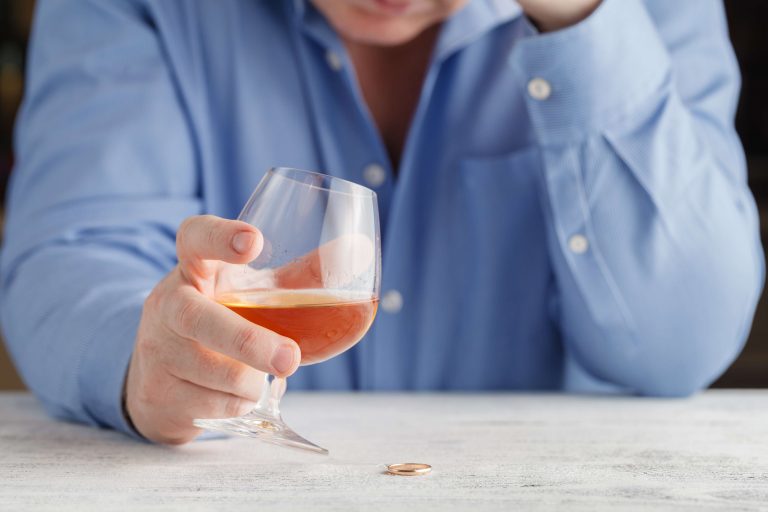Substance Use Disorders: Types, Symptoms, and Treatments
Substance use disorder is a treatable chronic condition that affects a person’s brain and behavior, leading to their inability to control their use of substances such as legal or illegal drugs, alcohol, or medications. Addiction is a chronic disease characterized by drug seeking and use that is compulsive, or difficult to control, despite harmful consequences. Treatment for substance use disorders may involve behavioral therapies, medications, or a combination of different approaches. Cognitive behavioral therapy (CBT), contingency management, and motivational enhancement therapy are a few types of therapy that may be used.
- If you feel that you sometimes drink too much alcohol, or your drinking is causing problems, or if your family is concerned about your drinking, talk with your health care provider.
- Learn more about NIMH research areas, policies, resources, and initiatives.
- Growing up in families in which drinking or using drugs is common or normalized also places one at a greater risk for developing a substance use disorder.
- Attempts to stop drug use may cause intense cravings and make you feel physically ill.
Other life-changing complications
Drug abuse, the excessive, maladaptive, or addictive use of drugs for nonmedical purposes despite social, psychological, and physical problems that may arise from such use. Substance use disorder (SUD) is a treatable mental disorder that affects a person’s brain and behavior, leading to their inability to control their use of substances like legal or illegal drugs, alcohol, or medications. Symptoms can be moderate to severe, with addiction being the most severe form of SUD. Drug abuse, including alcohol and prescription drugs, can induce symptomatology which resembles mental illness. This can occur both in the intoxicated state and also during withdrawal. In some cases, substance-induced psychiatric disorders can persist long after detoxification, such as prolonged psychosis or depression after amphetamine or cocaine abuse.
Substance Use Disorder vs. Substance Abuse
According to the Centers for Disease Control and Prevention (CDC), more than 70,000 people in the United States died from overdoses in 2017. And every year, around 88,000 people die from excessive alcohol use in the United States. There are several levels of intensity of substance use treatment. The medications and treatment program recommended will be based on each individual’s situation.
- Substituted cathinones can be eaten, snorted, inhaled or injected and are highly addictive.
- A protracted withdrawal syndrome can also occur with symptoms persisting for months after cessation of use.
- In addition, more than one in four adults living with serious mental health problems also has a substance use problem.
- Different types of substance use disorders can have a wide range of symptoms.
International Patients
When the patient’s substance abuse represents an effort to self-medicate an emotional disorder, it is important for the physician to recognize this fact. The physician must then include in the treatment plan measures to alleviate the emotional disorder. Barbiturates, diazepam, methaqualone, and substance abuse in older adults other sedative drugs can produce a significant physical addiction. The abstinence syndrome that results when the patient is deprived of barbiturates can be dangerous, resulting in severe convulsions and even death. The withdrawal syndrome from alcohol is similar to that seen in barbiturates.
Social Problems
For more information about treatment for mental disorders, visit NIMH’s Health Topics webpages. Results from NIDA-funded research have shown that prevention programs involving families, schools, communities, and the media https://ecosoberhouse.com/ are effective for preventing or reducing drug use and addiction. Although personal events and cultural factors affect drug use trends, when young people view drug use as harmful, they tend to decrease their drug taking.
Use of stimulants such as amphetamine do not result in marked physical dependence but can lead to extreme psychologic dependence. Probably the drug that produces the strongest psychologic dependence is cocaine. In the United States, 5 to 10% of the adult population is said to have a drinking problem; about 600,000 persons are addicted to heroin; and an estimated 25 million Americans have at least tried marijuana. It is apparent from these statistics that substance abuse is a significant subject for inquiry.
Stages of substance use disorder
- For others, particularly with opioids, drug addiction begins when they take prescribed medicines or receive them from others who have prescriptions.
- Sociodemographic trends are influential such as the population’s gender, age and the rate of urbanization.
- Addiction is a state of psychological and/or physical dependence on the use of drugs or other substances, such as alcohol, or on activities or behaviors, such as sex, exercise, and gambling.
- Also, dependence on prescribed drugs is not uncommon, especially with tranquilizers and hypnotics.
- The latest causal relationships established are those between alcohol consumption and incidence of infectious diseases such as tuberculosis and HIV/AIDS.
- Physical dependence becomes apparent only when the drug intake is decreased or stopped and an involuntary illness called the withdrawal (or abstinence) syndrome occurs.
- These are provided in outpatient facilities or inpatient residential recovery programs.




